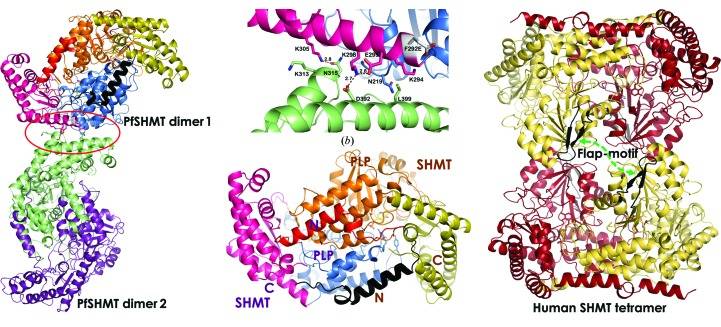The rapid rise in drug-resistant malaria compromises the use of current anti-malarial drugs. Plasmodium falciparum serine hydroxymethyltransferase (PfSHMT), an enzyme in the dTMP synthesis cycle, is a potential target for the development of new drug because inhibition of its expression or function has been shown to be lethal to the parasite. In order to use PfSHMT as a target for the design of effective inhibitors, crystal structures of the enzyme are needed.
Researchers performed the crystallization of the surface-engineered mutant PfSHMT-F292E and subsequently determined its structure. The crystal structure of PfSHMT reveals the presence of a unique cysteine pair that acts as a switch to control the tetrahydrofolate-dependent activity of PfSHMT. This redox switch is not present in the human enzyme, in which the cysteine pair is absent. This discovery provides a new strategy to design and develop new families of effective antimalarial drugs that can specifically disrupt the activity of the parasite enzyme without interfering with the function of the human enzyme.

This work is a collaboration between researchers from Protein-Ligand Engineering and Molecular Biology Laboratory, BIOTEC and the Department of Biochemistry and Center for Excellence in Protein Structure and Function, Mahidol University.
Ref: Chitnumsub P., Ittarat W., Jaruwat A.,Noytanom K., Amornwatcharapong W., Pornthanakasem W., Chaiyen P.,Yuthavong Y., Leartsakulpanich U. The structure of Plasmodium falciparum serine hydroxymethyltransferase reveals a novel redox switch that regulates its activities. Acta Crystallographica Section: D Biological Crystallography. 70(Pt 6), 1517-27.
